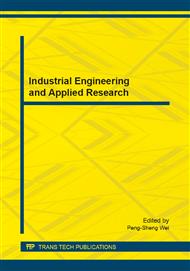p.292
p.296
p.300
p.304
p.310
p.317
p.321
p.330
p.337
Study on Random Response Analysis for the Isolation Cylinder Clamp
Abstract:
For the fracture failure phenomena occurred in random vibration experiment of the isolation clamp cylinder on the aerospace vehicles, the NX NASTRAN was used to make the finite element modeling for the overall structure of cylinder and analyze the random vibration response. The simulation results show that the maximum RMS stress of the clamp was 96 MPa at the test load conditions. The position of the maximum RMS stress is consistent with the one where fracture happens during vibration test. According to finite element analysis results, the original structure has been modified. The maximum RMS stress of modified structure is only 21.8 MPa.
Info:
Periodical:
Pages:
310-314
Citation:
Online since:
August 2014
Authors:
Keywords:
Price:
Сopyright:
© 2014 Trans Tech Publications Ltd. All Rights Reserved
Share:
Citation:


